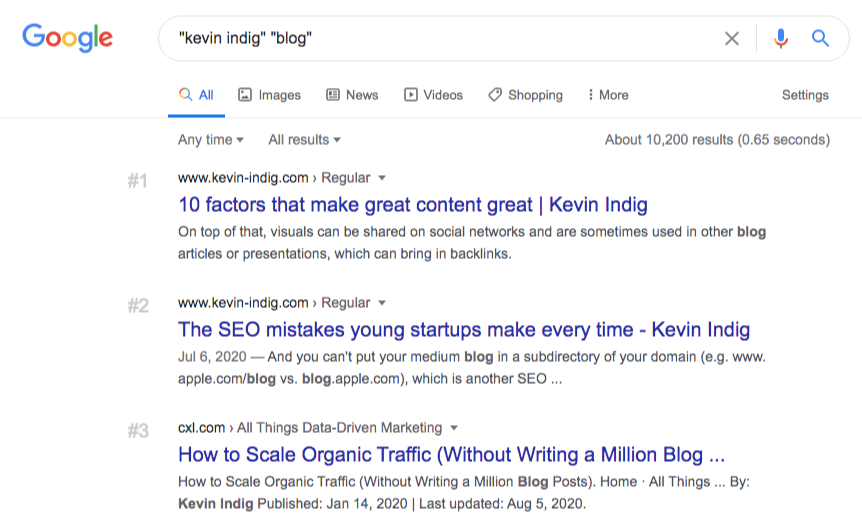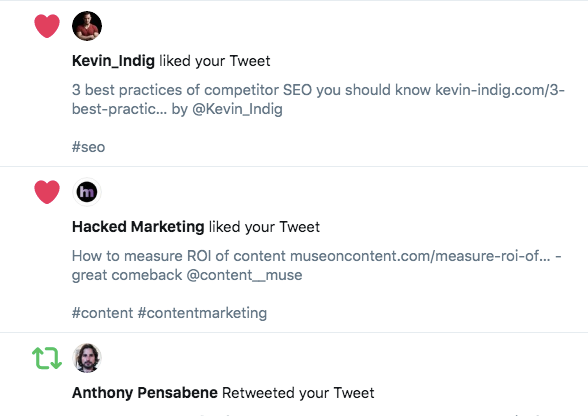by Venchito Tampon Jr | Last Updated on November 17, 2021
Have you ever prospected thousands of websites only to find out that most of them are the most irresponsive targets for your outreach emails?
It happens all the time — only if you don’t do smart link prospecting.
In today’s blog post, you’ll discover how to find relevant prospects that are likely to respond to your pitch — bringing much value to your business.
You’ll also learn ways on how to re-engage them for future link opportunities, even after you’ve landed links on their websites.
Before we dive into the methodology of effective link prospecting, let’s first understand what smart link prospecting is.
Table of Contents
What is smart link prospecting?
Smart link prospecting is an intelligent way of doing your link prospecting initiatives so you would avoid the headaches and pains of not getting the results you’re looking for.
It involves understanding these three core elements: objective, audience targeting, and metrics.
Objective
Like any plan or campaign, you have to start with your objectives. What are you trying to achieve with prospecting?
Are you looking for people to engage and promote your newly launched content asset? Are you aiming to build relationships with key influencers and content creators who’ve linked to your competitors so you can get them to promote your future assets through links?
What is it that you want in link prospecting?
It’s easy to dive in without these objectives. But this would only make things worse if you can’t have specific objectives in mind when doing link search.
Audience Targeting
Seeking the wrong people is the worst link prospecting in the world.
By targeting the wrong people, you ended up way wasting your resources — time, money, staff resources, etc.
What you want to do is to identify the right groups of people to target for links.
If you’ve been in sales, you know the types of prospects: cold, hot, and warm. This same principle is something we can use for link prospecting.
Basically, warm prospects are people who are familiar with your brand. They know about you either they’ve read your content piece in the past, downloaded one of your books, partnered with your brand for retailing, or other activities that show they have good knowledge about your site.
Hot prospects are your existing link prospects. They either be recurring linkers of your content (constantly sending you organic links) or one-time linkers in any of your content pieces in the past.
The smart way of doing link prospecting isn’t only targeting the most relevant link prospects (that’s pretty obvious), but starting off with people who’ve had an established familiarity with your brand (warm and hot link prospects).
Metrics
Setting standards for your link prospecting is obviously a smart way given that you’re maximizing every opportunity to get these link building targets into linking to your content.
Link building is a value exchange.
If you find quality link prospects, you could give them the quality value they deserve depending on their needs. Vice-versa. They would also provide you with a link you need for your site.
You can check out this guide on how to use link metrics.
3 Smart Link Prospecting Approaches
The smart way of doing link prospecting isn’t only targeting the most relevant link prospects (that’s pretty obvious), but starting off with people who’ve had an established familiarity with your brand (warm and hot link prospects).
1. “Linkeratis” Movement
Linkeratis are web users who have the capacity to link to a certain website (the destination page) from a domain/page (the linking source) to where they have access to.
Smart link prospecting is understanding where these linkeratis are engaging.
You’ll realize that they’ve been following your brand for a while and have proven to link to you in the first place.
The “linkeratis” movement is creating a list of all your existing linkers and taking them into another link building action.
How to find these linkeratis?
1. Top linking pages
The most obvious approach to finding these linkers is to use Ahrefs or other link analysis tools to find people who’ve linked to your top pages.
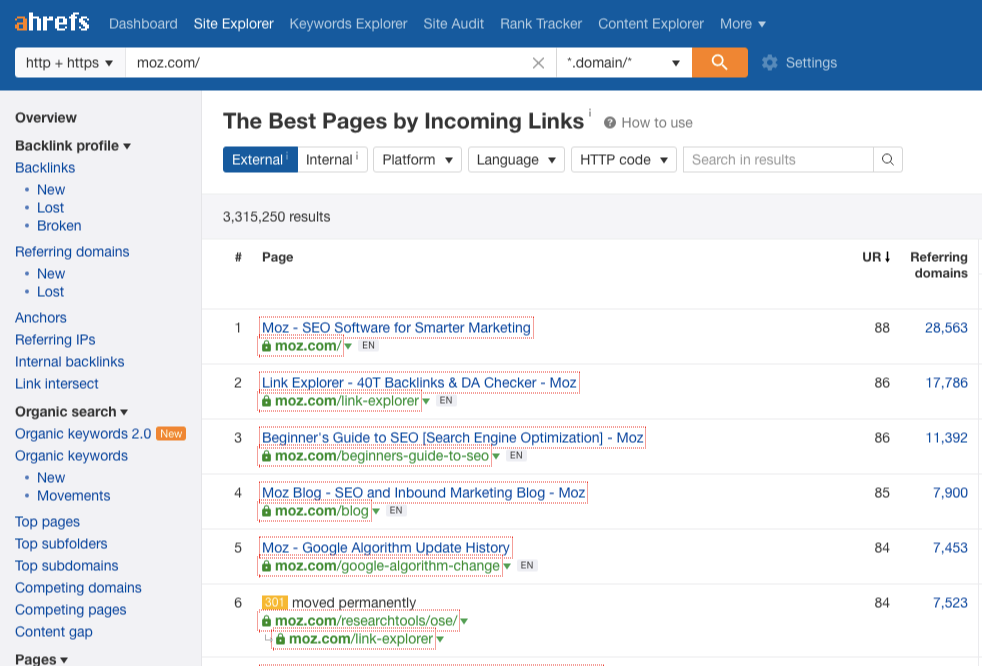
2. Interviews
People who’ve interviewed you for various reasons — either for a round-up post, a “quote” or insight for a story published in online or offline collaterals.
You could simply find them by typing in your “BRAND” “interview” or “NAME” “interview”. If you’re an enterprise, this might require more effects in digging which publishers have covered you previously.
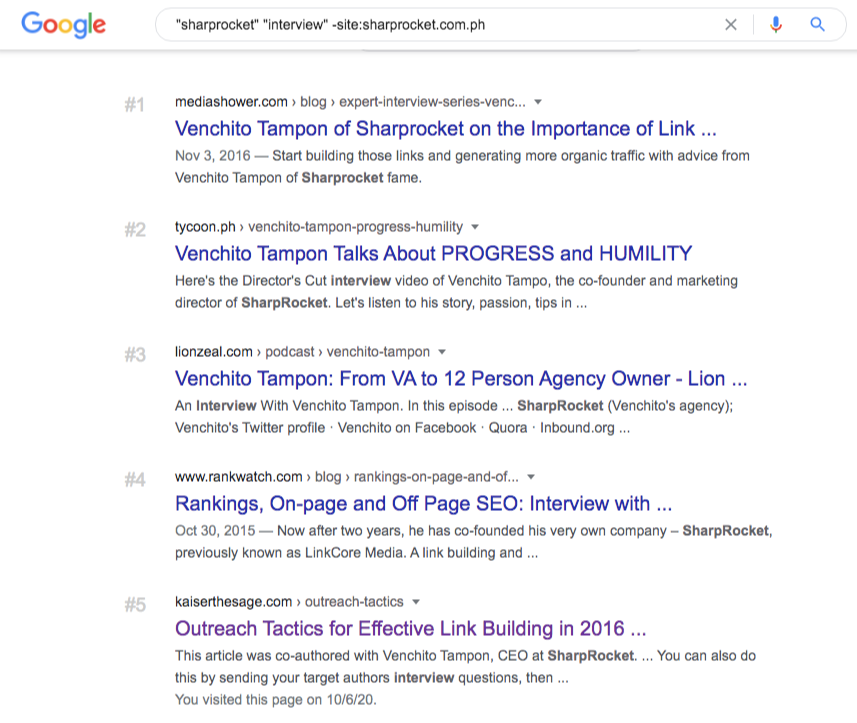
3. Content republishers
Have you published a visual asset, let’s say an infographic, and someone used it on their blogs?
Simply, these are content republishers.
They are part of the linkeratis, as they’ve seen the perceived value in your content piece through externally linking to your page.
You can use Tineye and BrandMentions to find republishers of your content.
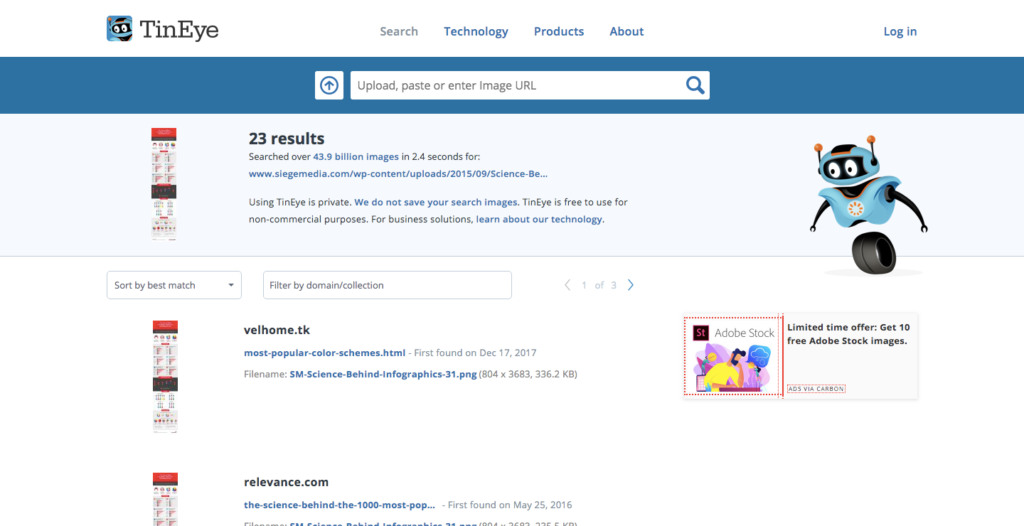
2. “Fan mode” Prospecting
Your fans care about you, particularly the ones who are raving for your next piece of content. They are either email subscribers or active social followers.
You won’t know if they are good link prospects, not until they’ve shown interest to link to you.
First, you have to be able to find who they are.
There are many social media tools – those web products that would allow you to get a list of social sharers of your content.
This is important given that you have to be looking for people who’ve shared your content but haven’t linked to you. With little nudges in your outreach, you could get them to take that link placement action.
In discovering these social media fans who became your content social shares, see if they have active blogs/sites or contributors or columnists on other industry publishers.
You want to make sure that they have the capacity to link to your content.
3. “Inside job” Prospecting
Being part of the parties is a good way to engage your target audience.
If you’re not yet part of online communities in your industry, you’re missing out on a lot of linking opportunities and branding exposure.
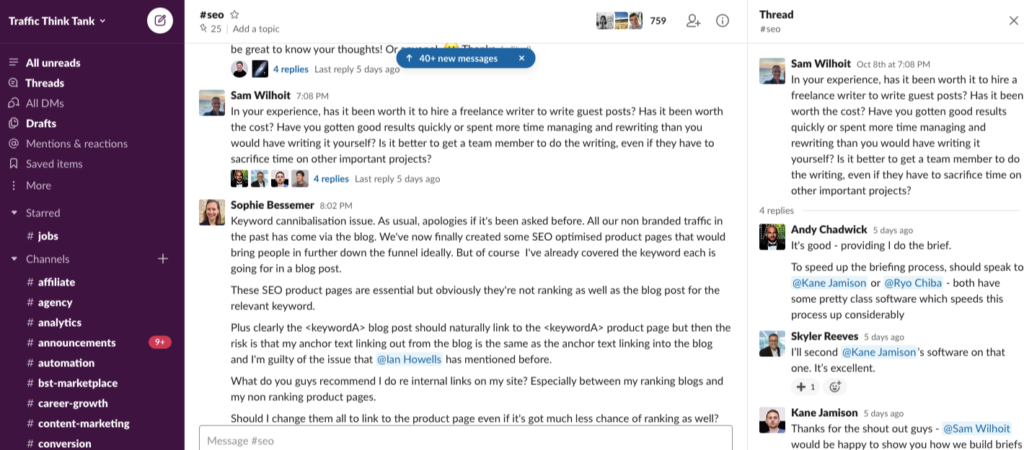
Find active communities, industry groups (i.e. Facebook groups), and slack channels you can involve yourself in.
This is what we call, “inside job” prospecting. You first engage in a community. You answer questions you think you could provide more value through your experience, expertise, or simply your own insights on the topic.
You don’t appear to be pushy, or out of the party in the online community, but rather a person who cares to provide value to the audience.
What you want to do is to start following active community participants — target those either with highly engaged followers, part of the top community users, or co-hosts of online events (i.e. webinars).
Know what makes them tick and share their posts to get you on their radar.
Familiarity With Your Brand
As you grow your brand, people become more familiar with who you are and what you do.
The people who will likely show interest in linking to your site are the ones who already acknowledge you as a good value creator.
With the right objectives, proper audience targeting, and understanding of what metrics fit you — based on your industry and context, can help you prospect for link targets who are responsive to your outreach pitches.
Other Useful Resources:
The Author
Venchito Tampon Jr
Venchito Tampon is a Filipino Motivational Speaker, Corporate Trainer, and a Leadership Speaker in the Philippines. He is the CEO and Co-Founder of SharpRocket, a link building agency. With a decade of experience, Venchito has a proven track record of leading hundreds of successful SEO (link builidng) campaigns across competitive industries like finance, B2B, legal, and SaaS. His expert advice as a link building expert has been featured in renowned publications such as Semrush, Ahrefs, Huffington Post and Forbes. He is also an international SEO spoken and has delivered talks in SEO Zraz, Asia Pacific Affiliate Summit in Singapore, and Search Marketing Summit in Sydney, Australia. Check out his other businesses, Hills & Valleys Cafe, Blend N Sips and Saas Pursuit.
How our LINK BUILDING AGENCY builds 250 links/mo consistently using Predictable Link Building Methodology™…
- Using a SIMPLE and PROVEN system
- Using a SCALABLE strategy
- No private blog networks
- No creepy outreach emails
